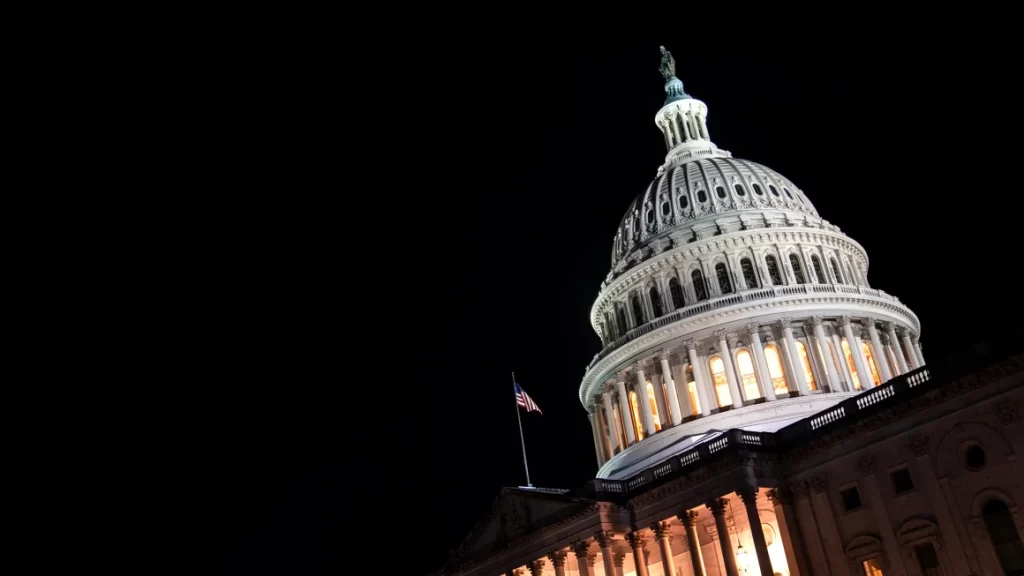
The Senate’s role in confirming Cabinet nominees is a key part of the U.S. political system, but the process is rarely contentious. Since 1989, only one Cabinet nominee has been rejected outright by the Senate—John Tower, who was nominated by President George H.W. Bush as Secretary of Defense. Tower’s confirmation was derailed due to allegations of excessive drinking and misconduct, which led to an FBI investigation. This is a rare example in a broader trend where nominees typically either pass confirmation or withdraw due to mounting opposition.
Most recent presidents, including Bill Clinton and Donald Trump, have seen at least one nominee withdraw after it became clear they would not be confirmed. For instance, Clinton’s nominee for Attorney General, Zoe Baird, stepped down after admitting she employed undocumented immigrants as domestic workers. Similarly, the confirmation process can take months, and while some positions may remain unfilled for long periods, others move through quickly. This delay is partly due to the highly partisan nature of the Senate’s current confirmation procedures.
What is the Cabinet?
The Cabinet is a group of presidential advisers that includes heads of major executive departments like Defense and Justice, as well as other senior officials such as the Vice President and the White House Chief of Staff. The Cabinet is crucial in helping the president lead the federal government, though not all positions require Senate approval. Some high-level posts, like the U.S. Ambassador to the United Nations, may be considered at the Cabinet level, but this has varied over time. Under President Joe Biden, the Cabinet includes 26 members.
Why Does the Senate Have a Say?
The U.S. Constitution grants the Senate “advice and consent” powers over certain presidential appointments, including Cabinet members. This power is outlined in Article II, Section 2 of the Constitution. It specifies that while the president nominates candidates for key positions, these appointments require Senate approval. If the Senate is in recess, the president can make temporary appointments without Senate approval, which are valid until the end of the next session.
How Many Positions Need Senate Confirmation?
While most Cabinet-level positions are high-profile, the president nominates a wide array of individuals to various posts that also require Senate confirmation. The Partnership for Public Service tracks around 1,200 such positions, ranging from undersecretaries to ambassadors. Many of these positions are filled by career staff, but some are politically significant. Some nominations may languish for years without being filled, and the confirmation process itself has slowed over time, with increasing partisan delays.
How Does the Nomination Process Work?
Once a new president is elected, their transition team begins vetting potential Cabinet nominees, often before Inauguration Day. The Senate’s oversight committees hold confirmation hearings for each nominee, which can stretch into the new president’s term. A nominee is then referred to the full Senate for a vote, which can sometimes be delayed or drawn out due to partisan opposition. This process has become increasingly slow, with fewer nominations confirmed in the early months of a presidency compared to previous administrations.
For example, when George H.W. Bush took office in 1989, seven of his nominees were confirmed by the end of January. In contrast, Donald Trump had just two confirmations by the same time, while Joe Biden had one.
What About Recess Appointments?
The Constitution also allows the president to make recess appointments if the Senate is in recess, bypassing the confirmation process entirely. However, these appointments are temporary and typically last only until the end of the next Senate session. While this strategy has been used in the past, especially by presidents like Ronald Reagan and Bill Clinton, it has become less common. The last major use of recess appointments occurred in 2016, when President Barack Obama made several appointments to the National Labor Relations Board during a brief Senate recess. A subsequent Supreme Court ruling clarified that a recess must be at least 10 days for such appointments to be valid, which has effectively limited their use.
Can a President Bypass the Senate Entirely?
In theory, a president could circumvent the Senate’s advice and consent powers by calling for an adjournment of the Senate and making recess appointments. However, this would be highly controversial and has never been attempted by a modern president. Some Trump allies have floated the idea of using this power, which would require approval from the House of Representatives to adjourn the Senate. Even if successful, such a move would likely face legal challenges and may not stand up to judicial scrutiny, especially given the contentious nature of such an extraordinary measure.
Historical Rejections and Loopholes
Throughout history, the Senate has rejected a few Cabinet nominees, though this is exceedingly rare. The first instance occurred in 1834, when President Andrew Jackson’s nominee Roger B. Taney was rejected as Treasury Secretary. Jackson later nominated Taney to the Supreme Court, where he was confirmed. Taney would go on to deliver the infamous Dred Scott decision, which ruled that Black Americans could never be citizens.
In more recent times, presidents have occasionally sought ways around the Senate confirmation process. While recess appointments and temporary appointments have been used as workarounds, the Constitution remains clear about the Senate’s role in confirming key positions, and any effort to bypass this process would spark significant political and legal battles.
Conclusion
The Cabinet confirmation process serves as an important check on presidential power, ensuring that key appointments are subject to Senate approval. Although rare, there have been instances of nominees being rejected or withdrawing, and the process has slowed over time due to partisan gridlock. While presidents have limited options for bypassing the Senate, recess appointments remain an option, though they are rarely used and subject to legal challenges. The ongoing debate around this process underscores the tension between executive power and legislative oversight in American democracy.








